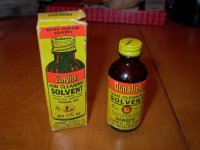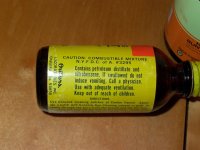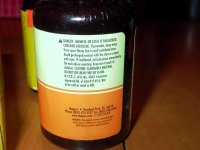Normal solvent...
Good ole Hoppes #9.
If you shoot the gun regularly, forget about removing the "burn" marks on the cylinder front. Just clean with your normal solvent and a brush or patch to remove any residue. The burn marks would just show up after every shooting, and if you try to clean them off from a blued gun you will eventually be down to bare metal.
Good ole Hoppes #9.



